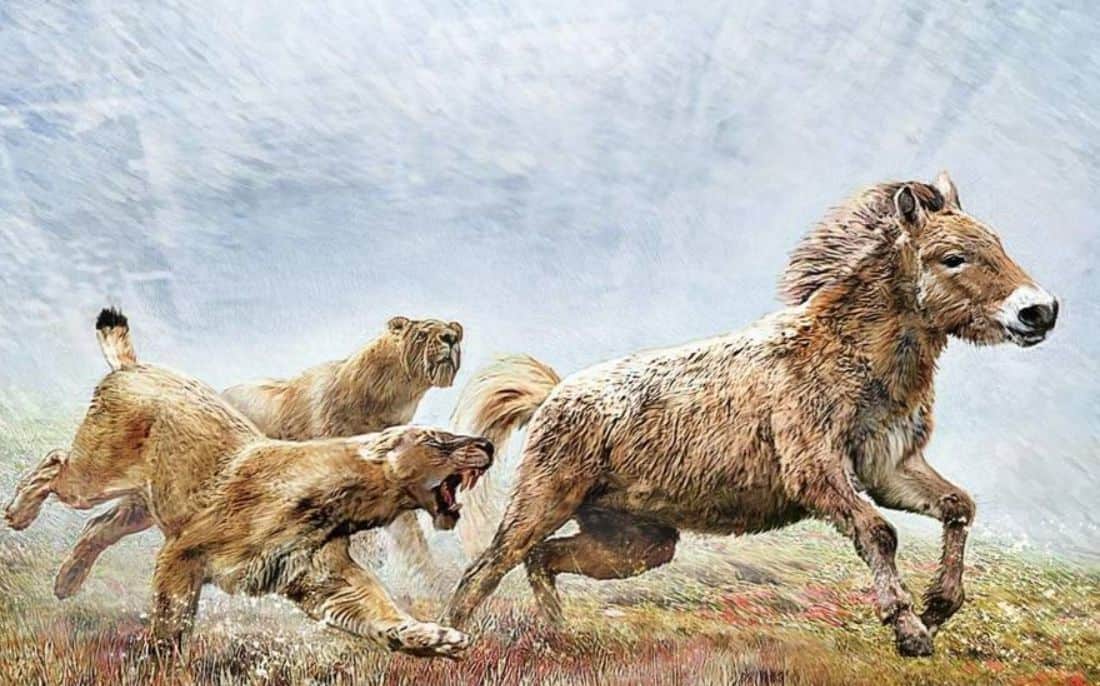A recent study has just revealed how saber-toothed cats, an extinct prehistoric animal, hunted in ancient times. Their tactic was to exhaust their prey.
Along with the woolly mammoth and the giant ground sloth, saber-toothed cats were probably one of the most famous animals that lived during the Pleistocene and became extinct before the end of the last ice age.
Now, researchers at the University of Copenhagen (Denmark) have managed to map the entire nuclear genome of a saber-toothed cat, ‘Homotherium latidens’. Their study of DNA reveals which genes were highly selected and important in the evolution of the species.
Exhausting its prey
“Their genetic makeup hints towards scimitar-toothed cats being highly skilled hunters. They likely had very good daytime vision and displayed complex social behaviors,” explains Michael Westbury, Postdoc in the Evolutionary Genomics Section of the GLOBE Institute at the University of Copenhagen.
“They had genetic adaptations for strong bones and cardiovascular and respiratory systems, meaning they were well suited for endurance running. Based on this, we think they hunted in a pack until their prey reached exhaustion with an endurance-based hunting-style during the day light hours,”, adds the author of the study, published in the scientific journal ‘Current Biology‘.
Researchers extracted DNA from a fossil of ‘Homotherium latidens’, recovered from Pleistocene permafrost sediments near the city of Dawson, Canada. This specimen was so old that it could not be dated using conventional radiocarbon dating, meaning it was at least 47.5 thousand years old.
They used a variety of modern genomic sequencing techniques to map the entire fossil genome and showed that saber-toothed cats were very genetically diverse, relative to modern cat species.
“We know that genetic diversity correlates to how many of a given species that exists. Based on this, our best guess is that there were a lot of these big cats around. This also makes perfect sense given that their fossils have been found on every single continent except Australia and Antarctica,” says Westbury.
According to Phys.org, their analysis also showed that the saber-toothed cat is very different from all modern cats. They separated from them at least 22.5 million years ago. By comparison, humans and primates separated between 15 and 20 million years ago.
